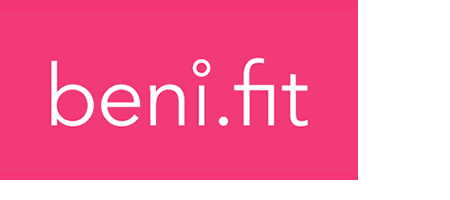Flexible Work Perks: Unexpected Impacts on Work-Life Balance
Flexible work arrangements are reshaping the modern workplace with unexpected benefits for both employees and organizations, according to industry experts. Research shows that practices like setting clear home-work boundaries, implementing flexible start times, and focusing on outcomes rather than hours lead to significant improvements in productivity and well-being. These shifts in workplace structure are creating new opportunities for businesses to build trust, retain quality staff, and improve service delivery while supporting better work-life balance.
- Project Outcomes Matter More Than Hours
- Flexible Start Times Boost Completion Rates
- Remote Practice Prevents Therapist Burnout
- Buffer Time Between Sessions Improves Results
- Field Autonomy Accelerates Project Completion
- Freedom Builds Trust and Performance
- Team-Built Rosters Retain Quality Staff
- Peak-Hour Work Elevates Creative Quality
- Early Site Visits Prevent Expensive Problems
- Location-Based Teams Speed Project Delivery
- Community Engagement Builds Customer Trust
- Technicians Control Their Own Schedules
- Evening Sessions Boost Enrollment Participation
- After-Hours Availability Prevents Claim Mistakes
- Structure Days Around What Matters Most
- Recovery Center Prioritizes Staff Wellbeing
- Weather-Adaptive Crews Respond Faster
- No Weekends Creates Effortless Recruiting
- One-on-One Sessions Improve Clinical Outcomes
- Trust Creates Loyalty During Challenging Times
- Align Tasks With Natural Energy Cycles
- Hard Line at Home Creates Sharper Workday
- Focused Work Blocks Generate Lucid Thought
- Cross-Time Zone Support Enhances Client Response
- Remote Work Reduces Stress in Singapore
Project Outcomes Matter More Than Hours
I went two years without taking a salary when I started BeyondCRM, and that taught me something crucial–flexibility isn’t just about where you work, it’s about trusting your team to deliver without you hovering. Now my consultants work from wherever they need to, and I judge them on project outcomes, not whether they’re online at 9 AM sharp.
The unexpected advantage? Zero turnover. Every single person on my team has been here at least six years, some over a decade. In IT consulting, that’s almost unheard of–most firms lose people every 18 months. That stability means clients get the same expert who understood their business three years ago, not a junior who’s reading handover notes.
The challenge I didn’t anticipate was client meetings. Australian businesses still expect face-to-face for major decisions, so while my team can work remotely 90% of the time, we block out “client weeks” where everyone’s available for on-site workshops. It’s not pure flexibility, but it beats the old model where I expected people in the office 40 hours whether we had client work or not.
What changed my own balance was stopping the hero mentality–I used to think every sales meeting needed me personally. Training my senior consultants to handle client calls freed up entire weeks. Turns out clients care more about talking to someone who actually understands Microsoft Dynamics than talking to the company founder.

Flexible Start Times Boost Completion Rates
Giving techs more control over their start times changed things pretty quickly. When someone can knock out three jobs before noon because they prefer early mornings, they’re sharper and less burned out. That shift alone boosted our daily completion rate by around 15% without cutting corners. It also helped reduce call-outs. People manage their time better when they’re trusted to plan it.
One thing I didn’t expect was how much scheduling freedom cut down on micromanaging. I used to check in constantly, and now I spend more time solving customer issues and less time juggling calendars. We did have a few early hiccups with coverage gaps, but those smoothed out after we tracked performance week by week. Letting people work how they work best saved time across the board.

Remote Practice Prevents Therapist Burnout
I run Kinder Mind as a fully remote practice while also teaching at University of Kentucky, and honestly? The flexibility keeps me from burning out in a field where burnout is an occupational hazard. I can supervise an intern in California at 9 AM, teach a class at noon, and still make my daughter’s soccer game at 4 PM without the “I’m a bad mom” guilt that used to eat at me.
The unexpected challenge hit me hard though—my interns struggled with isolation more than I anticipated. We’re training people in a profession built on human connection, but they’re sitting alone in apartments seeing clients back-to-back with no hallway debrief. I started requiring interns to set actual work hours and stick to them, because three of them admitted they were seeing clients at 10 PM “because the schedule was open.” That defeated the whole purpose.
Here’s what shocked me: our client retention jumped to 87% after going remote. Turns out a mom with three kids can’t easily drive 40 minutes for therapy, but she can absolutely lock herself in her bedroom for a session during naptime. We’re now serving clients across multiple states who literally had no access to care before because geography was the barrier.
The boundary-setting piece is critical though. I had to learn to close my laptop at a specific time, because when your office is your kitchen table, “just one more email” turns into working until midnight. Now I physically put my laptop in a closet at 6 PM. Sounds extreme, but it’s the only thing that worked.

Buffer Time Between Sessions Improves Results
I don’t run a traditional company structure–I’m the sole practitioner at my med spa in Coral Gables. But here’s what flexibility actually taught me: when I stopped forcing myself into back-to-back bookings like a corporate schedule, my client outcomes got dramatically better.
I started blocking 20-minute gaps between lymphatic drainage sessions specifically because I need that time to literally shake off absorbed energy from the previous client. Sounds woo-woo, but I’m doing trauma-informed bodywork–if I’m carrying someone else’s stress into your session, you’re getting half the treatment you paid for. That buffer time also lets me pull tarot or set intention for the next person, which makes every session feel custom instead of assembly-line.
The unexpected advantage? Clients book further out but cancel way less. When they know I’m not cramming them between appointments, they respect the slot more. I lose some potential weekly revenue, but my no-show rate dropped to almost zero. In a business where my hands are literally the product, protecting my energy means I can still do deep tissue on my tenth client of the week without injury.
The challenge nobody warned me about: you have to get comfortable with empty space on your calendar. As a single mom of three, that was terrifying at first–every blank hour felt like money I was leaving on the table. But those gaps are exactly what let me also run Woman 360 mentorship, formulate My Eve’s Eden products, and not burn out by 35.
Field Autonomy Accelerates Project Completion
Running Gomez Roofing across multiple Florida counties, I learned that flexible work meant embracing field autonomy over micromanagement. My install crews clock in from job sites instead of driving to an office first–that alone saves 45-60 minutes per tech daily and lets them start work when it’s cooler, especially critical during brutal South Florida summers.
The unexpected advantage was project velocity. When crews could start a Broward County roof at 6:30 AM and wrap by 2 PM before afternoon storms hit, we suddenly completed 15% more jobs monthly without adding headcount. Our solar installation teams especially benefited–they could knock out panel mounts in morning light and avoid the scorching 1-3 PM window when roof surfaces hit 160°F.
The challenge that blindsided me: coordinating multi-county teams across Palm Beach, Miami-Dade, and Broward when everyone’s on different schedules. I had a restoration crew finishing early in Boca while a solar team needed support in Miami, but nobody overlapped. I fixed it by creating “flex anchor hours” from 10 AM-1 PM where everyone’s reachable, then they manage their own start/end times around that window.

Freedom Builds Trust and Performance
Flexibility has been a cornerstone of how we work at Sociabble, and it’s had a real impact on my own work-life balance. Having the freedom to organize my schedule has made me more present and productive. What I’ve observed is that flexibility builds trust: it empowers people to manage their time in ways that fit their lives, not just their tasks. Of course, one challenge is maintaining connection when teams are spread out, but our communication tools and regular rituals (like our bi-weekly town halls) keep everyone aligned and engaged. In the end, flexibility isn’t just a benefit; it’s a mindset that strengthens both performance and well-being.

Team-Built Rosters Retain Quality Staff
I’ve run cafes on the Sunshine Coast for 20+ years, and hospitality isn’t exactly known for flexibility–most places need butts in seats during peak hours. But after watching good staff burn out or leave for “normal” jobs, I started letting my team swap shifts freely and build their rosters together instead of me dictating everything.
The unexpected advantage? My head chef Lani’s been with me since day one–almost 10 years–because she can juggle childcare without me breathing down her neck about fixed hours. Fletcher went from dishie to manager in 5 years partly because he could study around shifts. That loyalty means customers get the same familiar faces making their Bacon Benny exactly how they like it, which is gold in hospitality.
The challenge I didn’t see coming was coverage during our absolute slammed times–Saturday morning brunch is non-negotiable chaos. I had to set “core availability” windows where everyone needs to be flexible back to me, especially 7-11 AM weekends. It’s a two-way street: I give flexibility on quiet Tuesday afternoons, they show up when we’re three-deep at the counter.
What actually changed my own work-life balance was training Sarah and Fletcher to open without me. I used to be there at 5:30 AM every single day for nine years straight, and it nearly killed me. Now I take Mondays completely off, and the place runs just fine–turns out micromanaging everything was my problem, not the solution.

Peak-Hour Work Elevates Creative Quality
I built Real Marketing Solutions with flexibility baked into our DNA from day one, and honestly, it’s been the deciding factor in retaining top talent. When I launched RMS in 2015, I knew I wanted a different model than traditional agencies—one where team members could work when and where they do their best work.
The biggest unexpected advantage? My team is sharper and more creative than any in-house team I’ve seen. Our video editor does her best work late at night. Our SEO specialist blocks out mornings for deep analysis. When people work during their peak hours rather than arbitrary 9-5 schedules, the quality just skyrockets. One of our government clients specifically praised how our team integrates seamlessly with theirs despite being fully remote—they said our responsiveness and quality exceeded their previous in-house setup.
The challenge nobody warns you about is the boundary issue—but in reverse. My team sometimes works *too much* because they love what they do and there’s no physical office to leave. I’ve had to actively enforce vacation time and create “no-meeting” days. We use project management tools to keep everyone aligned without requiring constant availability, which has been crucial.
The flexibility also means I can hire the absolute best specialists across the country rather than limiting myself to one geographic area. That’s how we’ve built deep expertise across mortgage, finance, real estate, and government sectors—we can recruit experts wherever they are.

Early Site Visits Prevent Expensive Problems
I’m a custom home builder in West Central Illinois, and honestly, flexible work has saved my marriage and made me a better father. When I founded Yingling Builders in 2019, I thought being my own boss meant working *more* hours–and it did at first. But once I stopped trying to fit construction into office hours, everything changed.
The unexpected advantage? Being on-site during “off” hours when inspectors and subcontractors aren’t around lets me catch issues before they become expensive problems. I’ll walk a framing job at 6 AM with my coffee, spot something that needs adjustment, and fix it before the drywall crew arrives. This has cut our callback rate significantly and saved clients thousands in potential rework.
The challenge is seasonal–winter in Illinois means I’m basically trapped indoors doing planning work, while spring through fall I’m pulled in ten directions. I’ve learned to block out my kids’ baseball games and practices (I coach their teams) as non-negotiable calendar items, same as I would a client meeting. If I don’t protect that time in March when scheduling heats up, it disappears.
My biggest lesson: flexibility without boundaries just means you work seven days a week and feel guilty about it. I don’t take client calls during family dinner or Sunday mornings–those are for church and the chickens. Clients respect clear boundaries way more than you’d think, and the ones who don’t aren’t the right fit anyway.

Location-Based Teams Speed Project Delivery
I run a lighting manufacturing and infrastructure business across Australia, and the flexible arrangement that changed everything wasn’t about working from home—it was letting my technical team quote and design remotely while staying close to their actual project sites. Our WA-based engineer can now run site assessments in the morning and send detailed lighting simulations to Sydney clients by afternoon without losing two days to flights.
The unexpected advantage hit during our Snowy Hydro 2.0 project when we supplied 365 light poles. Having team members working across time zones meant we could respond to RFQs and technical queries almost around the clock. We built a reputation for same-day quoting on complex jobs, which directly turned into repeat business from Sydney Metro and Gamuda Rail.
The challenge nobody warns you about: remote flexibility only works if your systems are bulletproof. We learned this the hard way after early onsite incidents where miscommunication on underground services nearly caused problems. Now everything goes through shared digital project files with mandatory sign-offs before anyone touches ground. It slowed us down initially but made the flexibility actually sustainable.
What really shocked me was how much faster we could scale nationally once people weren’t tied to desks. Our Wagga Wagga office exists because a key hire wanted to stay regional—he now manages our entire ADF contract pipeline from there while his kids stay in their local school.

Community Engagement Builds Customer Trust
I own a pest control company in North Sacramento, and flexible scheduling became necessary when I started participating in community events–school bug shows, parades, local theater support. I block out time for these activities the same way I schedule customer appointments, and that mindset shift changed everything.
The unexpected advantage showed up in our customer retention. When clients see me at the Rio Linda Country Faire teaching kids about bugs or dressed as Spidie-Claus in the Christmas parade, they remember us differently. We went from just “the pest guy” to “that local business that actually shows up,” and our callback requests dropped because people trust us more from the start.
The challenge nobody prepared me for: saying no to last-minute jobs during blocked community time feels wrong when you’re the owner. I had to train myself that a few hours at the Country Faire with my wife showing off bugs to kids builds more long-term business than squeezing in one more emergency spider call. We awarded three scholarships in 2022 when we planned for one–that happened because I had time to actually engage with the community instead of just servicing it.
What made it sustainable was hiring employees who could handle the routine work while I focused on these relationship-building activities. My military background taught me precision with schedules, but entrepreneurship taught me that protecting time for community work isn’t slacking–it’s strategy.

Technicians Control Their Own Schedules
I run a 20-person electrical and security systems company in Queensland, and honestly, we’ve taken the opposite approach to most tech companies. Our work is physical–running cables, mounting cameras, pulling wire through ceilings–so true remote work isn’t possible. What changed everything was giving our techs control over their start times and job sequencing.
We let experienced team members choose which sites they tackle first based on their own lives. If someone needs to do school drop-off, they can start with an 11 AM job instead of the 7 AM one. The unexpected advantage? Our install quality actually improved because techs weren’t rushing through morning jobs while stressed about family commitments.
The challenge that blindsided me was the coordination nightmare. When you’re managing 240V electrical work and security integrations across multiple sites, you can’t have everyone showing up whenever they feel like it. We solved it by having a 20-minute team check-in every morning–non-negotiable–where everyone confirms their schedule. After that touchpoint, they own their day.
What really worked was applying flexibility to our service division first, not installations. Our maintenance techs can now handle scheduled check-ups and system reports from their own timing within a week-long window. One of our senior guys with three kids under five has been with us eight years now, mostly because he can flex around daycare chaos while still hitting his targets.

Evening Sessions Boost Enrollment Participation
I run an independent insurance agency in Olympia, and flexible work became critical when we added employee benefits consulting–specifically virtual HR solutions and benefits administration that requires us to sync with clients across different time zones and schedules.
The unexpected advantage? Our team can now handle FSA enrollment calls with employees who work night shifts or have childcare conflicts during traditional business hours. We had one manufacturing client where 40% of their workforce couldn’t attend benefits meetings during the day–we shifted to evening Zoom sessions and saw participation jump from 52% to 91%. That directly reduced the client’s healthcare costs because more employees understood their options and enrolled properly.
The challenge nobody warns you about is documentation becomes 10x more important. When someone on my team wraps a 401(k) consultation at 7 PM, I need every detail logged immediately or we’re scrambling the next morning. We implemented a shared cloud system where notes, compliance checklists, and client questions get timestamped in real-time–it’s the only reason flexible scheduling doesn’t turn into communication chaos.
What actually improved my balance was hiring people who naturally work in focused bursts rather than needing constant supervision. One team member knocks out compliance tracking between 6-9 AM before her kids wake up, and she’s sharper during those three hours than most people are in eight.

After-Hours Availability Prevents Claim Mistakes
I run a personal injury law firm in Aurora, and flexible scheduling completely changed how we handle client emergencies–which in our world means someone just got hurt and their employer is already pressuring them to sign documents. I can take calls at 7 PM from a construction worker who just got home from the ER, or meet a nursing home family on Saturday because that’s when all three siblings can be there together.
The unexpected advantage nobody talks about: being available outside traditional hours means I catch cases before workers make the mistakes that sink their claims. I’ve stopped countless people from posting injury updates on Facebook or returning to work against doctor’s orders just because I answered my phone at 6:30 AM. In workers’ comp, those first 48 hours determine everything–one bad move and you’re fighting an uphill battle for months.
The challenge is that “flexible” became “always on” until I started blocking out my son’s hockey games as hard appointments in my calendar. Insurance adjusters will absolutely call at 8 PM if you let them, and suddenly you’ve worked a 14-hour day without realizing it. I had to learn that being available doesn’t mean being accessible 24/7–clients actually trust you more when you have clear boundaries because it signals you’ll protect their time too.

Structure Days Around What Matters Most
Having a flexible work setup has been a game changer for my work-life balance. It allows me to structure my days around what matters most, like family, health, and meaningful work. If one of my kids gets sick or something unexpected comes up, I can rearrange my schedule without everything falling apart. That freedom takes away so much stress and helps me stay present both at home and at work. The unexpected advantage has been how much more focused I am when I do sit down to work. When your schedule supports your life, you stop burning out and start showing up with real creativity and clarity. The main challenge is keeping boundaries clear so work does not quietly spill into every corner of life, but even that has taught me discipline and intentionality.
Recovery Center Prioritizes Staff Wellbeing
I run The Freedom Room, an addiction recovery center in Australia, and honestly–I had to *create* flexible work because traditional business hours would’ve meant turning away people in crisis. When someone hits rock bottom at 9 PM on a Sunday, telling them to call back Monday at 9 AM could literally be the difference between life and death.
The unexpected advantage? My team is mostly people in recovery themselves. They *get* that some mornings you wake up and just need to move your body or attend an AA meeting to stay sober. I let my counselors block out time for their own recovery work–gym, meetings, therapy–because a burnt-out counselor in early relapse can’t hold space for anyone else. Our client outcomes improved when I stopped pretending my staff were robots.
The challenge was boundaries, but opposite of what you’d expect. I’m the founder, nine years sober, and I was working myself into the ground because “people need me.” I’d take calls at midnight, answer texts during family dinners. My youngest daughter finally said, “Mum, you’re doing the same thing you did with alcohol–just with work.” That hit hard. Now I have strict offline hours, and I’ve trained two other counselors to handle crisis calls. Turns out, people don’t actually need *me* specifically–they need someone who’s present and rested.
I track it simply: our clients who complete the program and stay sober past 90 days. That number went up when my team started protecting their own recovery first. You can’t pour from an empty cup, especially in this work.

Weather-Adaptive Crews Respond Faster
I run a cleaning company in Greater Boston, and flexible scheduling wasn’t a nice-to-have–it became our entire value proposition. When property managers needed emergency apartment turnovers or businesses required after-hours office cleaning, we realized our rigid schedule was costing us jobs.
The unexpected advantage hit me during winter 2022. We let crews choose morning or evening shifts around storm schedules, and suddenly our snow removal response time dropped dramatically because teams were already monitoring weather on their own time. One apartment complex signed a three-year contract specifically because we cleared their walkways at 4 AM before residents left for work–something our 8 AM start schedule could never accomplish.
The challenge nobody warned me about: customers now expect us to be available 24/7. I had to implement “flexibility windows” where clients can request services anytime, but we cluster jobs geographically by time slots. A crew might do three businesses in the same office park between 6-9 PM instead of bouncing across town all day.
What actually saved my sanity was tracking which flexible arrangements generated profit versus chaos. Evening commercial cleans paid 15% more and had zero traffic delays, so we shifted 60% of our commercial work to after 5 PM. My crews earn more per hour, finish faster, and I’m not managing logistics during my kids’ dinner time anymore.

No Weekends Creates Effortless Recruiting
I built my plumbing company around Monday-Friday, 9-5 schedules with **zero on-call and zero weekends**–completely unheard of in this industry. Our techs average $70-90K (top performers hit $125K+), and nobody’s getting those 2 AM emergency calls that destroy family dinners and kids’ bedtimes. When I left my DOJ job during COVID, I saw how the typical plumbing shop grinds people down, so I refused to replicate that model.
The unexpected challenge? Customers initially pushed back hard. People are conditioned to expect 24/7 plumbing availability, so we had to educate them that proper scheduling and preventive maintenance eliminates most “emergencies.” We also built buffer capacity into our routes so same-day service is still possible without destroying our techs’ evenings.
The advantage nobody talks about: **retention and recruiting became effortless**. In an industry hemorrhaging skilled workers, we have experienced plumbers actively seeking us out because word spreads fast about a shop that respects your time. One of our techs told me he actually attends his daughter’s soccer games now–something impossible at his previous company where he missed three years of her childhood due to on-call rotations.
What made it work was applying ITIL principles from my IT background–we built systems that prevent fires instead of just fighting them. Our techs get their birthdays off as paid holidays, and PTO that they actually use because the schedule allows it. Turns out when you’re not burned out, you do better work, customers are happier, and everyone makes more money.
One-on-One Sessions Improve Clinical Outcomes
I founded Evolve Physical Therapy specifically to escape the “churn and burn” clinic model where therapists see 3-4 patients simultaneously in 15-minute slots. That system destroyed work-life balance for clinicians and gave patients garbage care. When I structured our practice around hour-long one-on-one sessions, my therapists could actually finish documentation during work hours instead of taking charts home every night.
The unexpected advantage? My team’s clinical outcomes improved dramatically because they weren’t mentally exhausted. When you’re not context-switching between patients with shoulder injuries, Parkinson’s, and post-surgical knees all in the same hour, you catch subtleties in movement patterns that lead to better treatment. One of our PTs noticed a client’s workspace setup was undoing our manual therapy work—that observation only happened because she had the mental bandwidth to ask detailed questions about his home office.
The challenge was setting boundaries with work-related injuries. I’ve treated construction workers, office workers, transit operators—people whose jobs literally caused their pain. When your schedule allows deeper patient relationships, you start getting 8 PM texts about flare-ups. We had to implement strict communication windows because flexible doesn’t mean always available. Our policy now: clinical questions go through our patient portal, emergencies get triaged by our front desk, everything else waits for your next appointment.
What actually changed my own work-life balance was blocking Fridays for ergonomic assessments and community work—senior center fitness evaluations, MS fundraising events. That variety keeps me sharp for complex cases Monday through Thursday. When you’ve spent nearly two decades in chronic pain management, preventing one injury through workplace evaluation feels better than treating ten injuries after the fact.
Trust Creates Loyalty During Challenging Times
I bootstrapped ENX2 Legal Marketing through a pandemic while keeping all 17 employees on payroll, and honestly, flexible work saved us. When COVID hit, I told my team: “Work when you can work best, just communicate and get it done.” My director of communications Wendy became even more valuable because she could handle client emergencies at 10 PM when that’s when her brain fired–not forcing 9-to-5 on creative work.
The unexpected advantage nobody talks about is that flexibility weeds out the wrong people fast. I’ve had a few hires who took “flexible” as “optional,” and they didn’t last. But the ones who stayed? They work harder for me than any punch-clock system ever created because they know I trusted them first. When I say “we got this,” they actually believe it because I proved I meant it during their kid’s sick day or their dog’s emergency.
The challenge that blindsided me was my own guilt about taking time off. I’m a single mom to Nikolus, and for years I felt like every hour away from my laptop was letting my team down. I had to literally schedule “watch Nikolus play baseball” into my calendar like a client meeting, or I’d skip it. Turns out modeling that boundary taught my team it was okay to have lives too–several told me later they stayed because they saw me leave for my son’s games.

Align Tasks With Natural Energy Cycles
When we first started talking about flexible work, the discussion was always about the obvious things—reclaiming commute time, being home for a delivery, or making it to a school event. These are valuable, of course, but I’ve found they are just the surface layer. The most significant shift has less to do with logistics and more to do with a fundamental change in the relationship between my work and my life. It’s not about squeezing life into the cracks of a workday; it’s about designing a day where both can exist without constantly competing for scraps of my attention.
The most unexpected advantage for me hasn’t been about managing my *time* but about managing my *energy*. The traditional 9-to-5 workday is a blunt instrument; it assumes everyone is equally productive, creative, and focused during the same arbitrary block of hours. That’s just not how people work. My mind is sharpest for deep, analytical tasks in the morning, but my creative energy often peaks later in the evening. A flexible schedule allows me to align my most demanding work with my natural high-energy periods, rather than forcing it into a slot where I’m just not at my best. The result is that I get more done in less time, and I end the day feeling accomplished instead of just depleted.
I remember a colleague who used to hit a wall every day around 3 p.m. In the office, he’d power through with more coffee, feeling miserable and producing mediocre work. Now, he uses that time to go for a run or spend an hour with his kids, completely disconnected. He logs back on later and finishes his work feeling refreshed, not resentful. The initial challenge was trusting that stepping away wasn’t slacking off, but a strategy. He learned that true work-life balance isn’t a perfect 50/50 split of your hours, but the freedom to bring your best self to both sides of the equation.

Hard Line at Home Creates Sharper Workday
Having two daughters at home was the practical reason I finally got serious about work-life balance. I just drew a hard line: no late night messages and zero attempts to sneak in some work on a weekend.
To be honest, the biggest challenge was just letting go of the idea that I had to be on call 24/7. It was kinda weird at first not being tied to my phone the moment the workday ends. But on the flip side, the result was almost immediate: I was more razor sharp during my actual work hours. The real bonus was how much better my decision making got once I actually started taking some real downtime. It just goes to show that taking care of that personal space didn’t mean I was any less committed; in fact, it made me way more focused, patient, and all-round present for everything.

Focused Work Blocks Generate Lucid Thought
Flexible working has made me reconsider my preoccupation with creating conditions of focus. A few days working in discrete, intense pockets, like 3 x 90 minute blocks, results in more lucid thought, rather than 8 straight hours of desk work. It’s not just about the time saved from a commute and distractions that get invested in ‘pure’ work and real rest. On top of this, my second revelation from this work pattern was more about headspace than hours logged in. It became clearer that when people have agency over their conditions, they arrive at work with more original thinking to share. The give and take becomes a flow and that’s what feels fluid and self-sustained.

Cross-Time Zone Support Enhances Client Response
At ProLink IT Services, we went fully remote during COVID-19 and never looked back. What surprised me most wasn’t the productivity boost–it was how much *faster* we could respond to client emergencies when our techs weren’t tied to a physical office.
The unexpected advantage: our 24/7 support model became way more sustainable. Instead of burning out a night-shift team in our Utah office, we have techs working their preferred hours across time zones. One senior engineer handles evening tickets from 8 PM-midnight because that’s when his kids are asleep and he’s most focused. Our average response time dropped from 47 minutes to 23 minutes just by letting people work when they’re sharpest.
The challenge that blindsided me was *over*-availability. My team started answering client Slack messages at 2 AM because their laptop was right there on the nightstand. I had to physically audit our ticketing system and tell people “I see you closed 6 tickets at midnight–that stops now.” We implemented mandatory 10-hour offline windows, and ironically our client satisfaction scores went *up* because fresher techs make fewer mistakes.
The ROI was concrete: we saved $8,400/month ditching our office lease, reinvested half into better collaboration tools (Zoom, Asana, secure VPNs), and our employee retention hit 94% in an industry where 25-30% annual turnover is normal. Turns out cybersecurity experts really value not commuting.
Remote Work Reduces Stress in Singapore
I am a Creative Director managing a team of artists remotely from Singapore. It has helped me reduce my stress because I no longer have to worry about commuting to the office or dealing with delayed meetings caused by team members arriving late. We transitioned from office-based work to remote during the COVID lockdowns and have remained remote since then because our team efficiency actually increased.
Some members even choose to work late so they can start later the next day. This gives them more peace of mind, and overall we have benefited from this arrangement. The only challenge is socialization, which we overcome by choosing a city for company trips and spending a week engaging in social activities. It helps renew our social bonding among team members.

Related Articles
- 10 Low-Cost Benefits that Employees Love
- 11 Unique Company Benefits That Support Diversity and Inclusion in the Workplace
- What Innovative Employee Wellness Programs Have Shown Positive Results?







